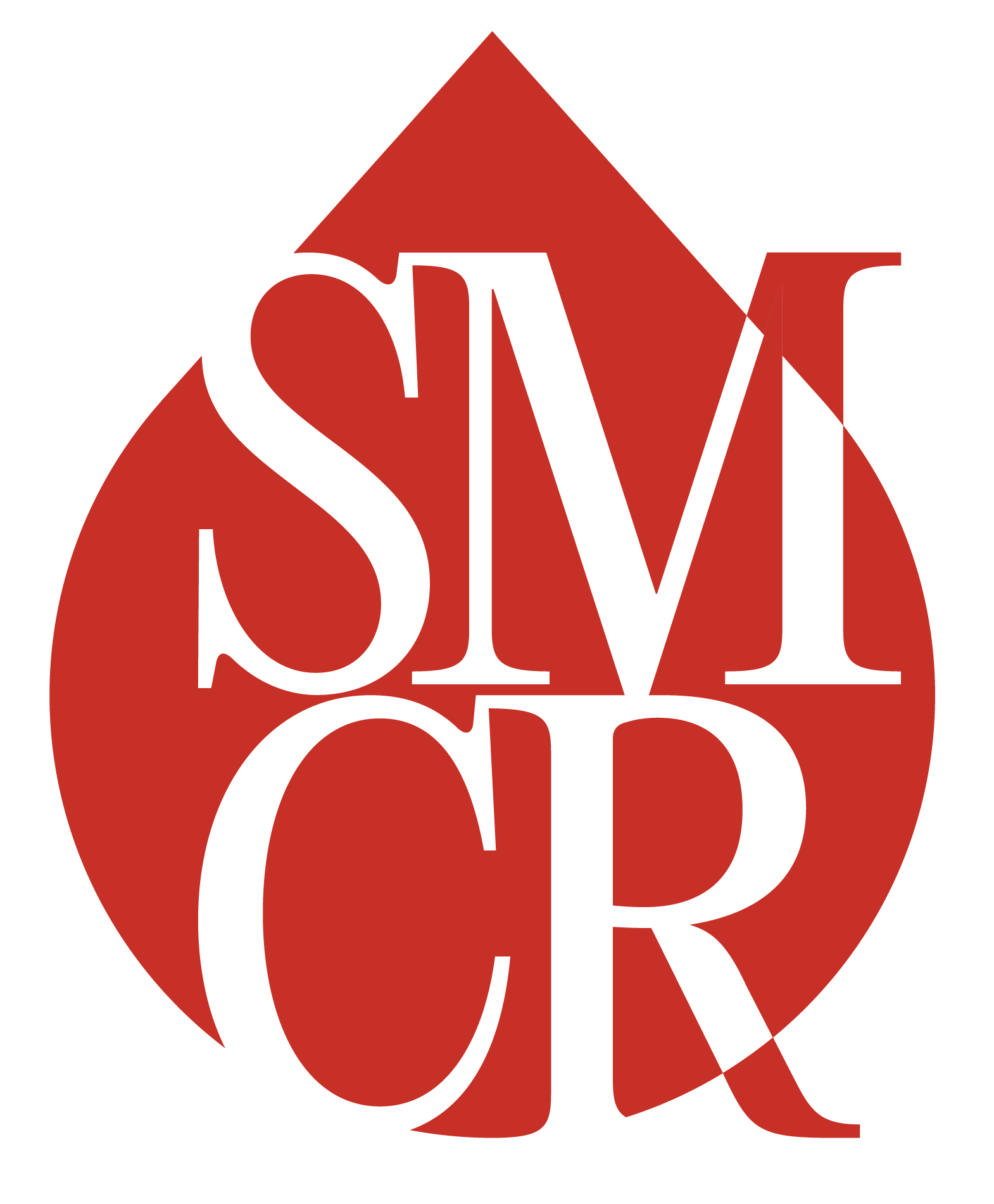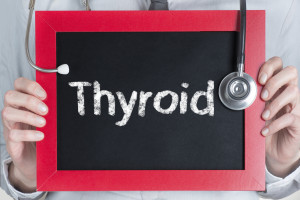Guest Post by Dr. Lara Briden, ND
The thing I love about periods is the story they tell about health. I am constantly asking my patients about their periods—even if they’ve come to me for something else.
For example, my patient Sharon came to me for help with elevated cholesterol. She also reported heavy periods and premenstrual spotting, which I was very interested in. “You could have a thyroid problem,” I said. She had already had a basic thyroid test (TSH) with her doctor, and was told it was normal. I ordered further tests, and we found that she did indeed require thyroid hormone. Three months after starting treatment, Sharon’s cholesterol had improved because thyroid hormone promotes the healthy removal of cholesterol from the blood [1]. Also, Sharon’s periods had lightened and the premenstrual spotting was also almost gone.
Thyroid hormone affects every cell in the body. That’s why thyroid disease causes a vast array of symptoms including fatigue, elevated cholesterol, hair loss, and dry skin. That’s why thyroid disease affects menstruation.
Menstrual signs of hypothyroidism (underactive thyroid)
- Irregular periods or lack of periods (amenorrhea)
- Premenstrual spotting
- Heavy or light periods [2]
- Ovarian cysts [3]
- Early [4] or late [5] menarche
Menstrual signs of hyperthyroidism (overactive thyroid)
- Irregular periods or lack of periods (amenorrhea)
- Light periods [2]
- Late menarche [5]
How Thyroid Affects Periods
There are numerous mechanisms by which thyroid hormone (or lack of thyroid hormone) affects menstruation.
Thyroid disease causes failure to ovulate with resulting progesterone deficiency. Both hypothyroidism and hyperthyroidism disturb pituitary hormones (prolactin, FSH, LH). Hypothyroidism deprives the ovarian follicles of the thyroid hormone they need to develop [7].
Hypothyroidism impairs insulin sensitivity, which is one reason thyroid disease is associated with polycystic ovarian syndrome (PCOS) [8].
Hypothyroidism reduces sex hormone binding globulin (SHBG), which causes greater estrogen exposure and therefore heavy periods. In contrast, hyperthyroidism increases SHBG which causes light periods.
Hypothyroidism impairs the healthy detoxification of estrogen, which causes greater estrogen exposure and therefore heavy periods.
Hypothyroidism decreases coagulation factors, which causes heavy periods. In contrast, hyperthyroidism increases coagulation factors, which causes light periods [7].
Why Doctors Miss a Thyroid Diagnosis
Doctors often don’t consider thyroid disease as a possible underlying cause of a period problem. They should remember that menstrual disturbances from thyroid disease have been documented in the medical literature since 1840 [2].
If doctors do consider thyroid, they usually go no further than a simple TSH test—a blood test to determine the level of thyroid stimulating hormone—which they interpret very conservatively. Under current guidelines, hypothyroidism is not flagged until TSH is greater than 5 mIU/L. Many thyroid experts, including the American Association of Clinical Endocrinologists (AACE) [9], believe that hypothyroidism can be diagnosed by a TSH greater than 2.5 mIU/L. If adopted by more doctors, the 2.5 guideline would be a more sensitive way to detect thyroid disease. Another way to detect a hidden thyroid problem is a test called “thyroid antibodies” (also called anti-TPO antibodies), which is a marker of autoimmune thyroid disease (the most common type of thyroid disease).
What If You Have Thyroid Disease?
Medical treatment of thyroid disease includes thyroid hormone replacement for hypothyroidism and thyroid suppression for hyperthyroidism.
Natural treatment works primarily to reduce the autoimmune reaction that underlies most thyroid disease. For example, elimination of dietary gluten has been shown to reduce thyroid antibodies [10]. The supplements vitamin D and selenium can also be helpful. A low-dose iodine supplement is appropriate only for non-autoimmune thyroid dysfunction. You can find more information about treatment on this post on my blog.
Periods are not separate from the rest of the body. They are an expression of general health and are affected by nutritional status, digestion, immune function, insulin sensitivity, and most profoundly—thyroid disease!
Lara Briden is a board certified naturopathic doctor who qualified from the Canadian College of Naturopathic Medicine in 1997. She currently runs a busy hormone clinic in Sydney, Australia, and posts regularly at Lara Briden’s Healthy Hormone Blog. Early in 2015, Lara released her book Period Repair Manual: Natural Treatment for Better Hormones and Better Periods.
References
- Pucci E et al. Int J Obes Relat Metab Disord. 2000 Jun;24 Suppl 2:S109-12. Thyroid and lipid metabolism. PMID: 10997623
- Koutras DA. Disturbances of menstruation in thyroid disease. Ann N Y Acad Sci. 1997 Jun 17;816:280-4. PMID: 9238278
- Shu J et al. Ignored adult primary hypothyroidism presenting chiefly with persistent ovarian cysts: a need for increased awareness. Reprod Biol Endocrinol. 2011 Aug 23;9:119. doi: 10.1186/1477-7827-9-119. PMID: 21861901
- Radaideh AM. Precocious puberty with congenital hypothyroidism. Neuro Endocrinol Lett. 2005 Jun;26(3):253-6.
- Longscope, C. 1991. The male and female reproductive systems in hypothyroidism. In Werner & Ingbar’s The Thyroid A Fundamental and Clinical Text. 6th edit. L. E. Braver- man & R. D. Utiger, Eds.: 1052-1055. Lippincott. New York.
- Thomas, R&R et al. Thyroid disease and reproductive dysfunction: A review. 1987. Obstet. Gynecol. 70: 789-798. PMID: 3309753
- Poppe K. Thyroid disease and female reproduction. Clin Endocrinol (Oxf). 2007 Mar;66(3):309-21. PMID: 17302862
- Janssen OE. High prevalence of autoimmune thyroiditis in patients with polycystic ovary syndrome. Eur J Endocrinol. 2004 Mar;150(3):363-9. PMID: 15012623
- AACE Medical Guidelines for Clinical Practice for the Evaluation and Treatment of Hyperthyroidism and Hypothyroidism, Endocrine Practice, Vol. 8, No. 6, Nov/Dec 2002.
- Sategna-Guidetti C et al. Prevalence of thyroid disorders in untreated adult celiac disease patients and effect of gluten withdrawal: an Italian multicenter study. Am J Gastroenterol. 2001 Mar;96(3):751-7. PMID: 11280546



This is an excellent article, Lara. Thank you.
The interesting thing is that not only do thyroid hormone changes alter menstrual cycles and ovarian hormones, the opposite is also true. We discovered in a randomized, placebo-controlled study of progesterone for menopausal hot flushes/flashes that progesterone treatment increased free thyroxin (Free T4)[1]. There were no progesterone-related changes in Free T3 or in Thyroid Stimulating Hormone (TSH).
My understanding is that Free T4 is essential for the fetus. Progesterone is normally very high during pregnancy so it makes sense to ensure there is sufficient Free T4.
Amazing, eh?
Cheers, Jerilynn
[1] Sathi P, Kalyan S, Hitchcock CL, Pudek M, Prior JC. Progesterone Therapy increases Free Thyroxine Levels- data from a randomized placebo-controlled 12-week hot flush trial. Clin Endocrinol (Oxf) 2013; 79:282-287.
Thanks Lara for this contribution. I would add that not only the period but the whole cycle reflects thyroid health. The number one reason for menstrual cycle disorders is thyroid dysfunction. I also pay attention to the quality and quantity of cervical mucus/fluid as a reflection of thyroid health, ovulatory patterns, luteal (postovulatory) length, PMS that is disabling especially depression and mood disorders associated with the perimenstrum.
Geraldine Matus
Justisse College
Thanks for your feedback Jerilynn. And thanks for sharing your progesterone-thyroid study (I love your work!).
Isn’t progesterone’s thyroid-boosting effect essentially the reason for the luteal phase rise in basal body temperature (BBT)?
Lara
Like 2 learn more
Since the 90’s I have been on Depo (on and off) until very recently because I hit my early 40’s. GP’s will say that its bad for you , but I felt at my best while on it. I always felt progesterone was actually working for me while oestrogen was a challenge. After 5 years on Hypo meds and more recently a gluten free diet, I am swimming 10 km a week! and shrinking to a slim fit size. I wish the “specialist” who diagnosed me with having Hashimotto antibodies provided more information about the Thyroid. great article THANK YOU
My problem is this; before I started treatment for hyperthyroidism my menstrual cycle was regular and it was easy for me to conceive. Since I started treatment for hyperthyroidism, I have been trying to conceive for the past five years and have never missed my period for one day. My menstrual circle comes whenever it pleases and when I think am ovulating it’s usually too much I mean the slippery stuff pours like water. What should I do please I want a child badly. Thank you all